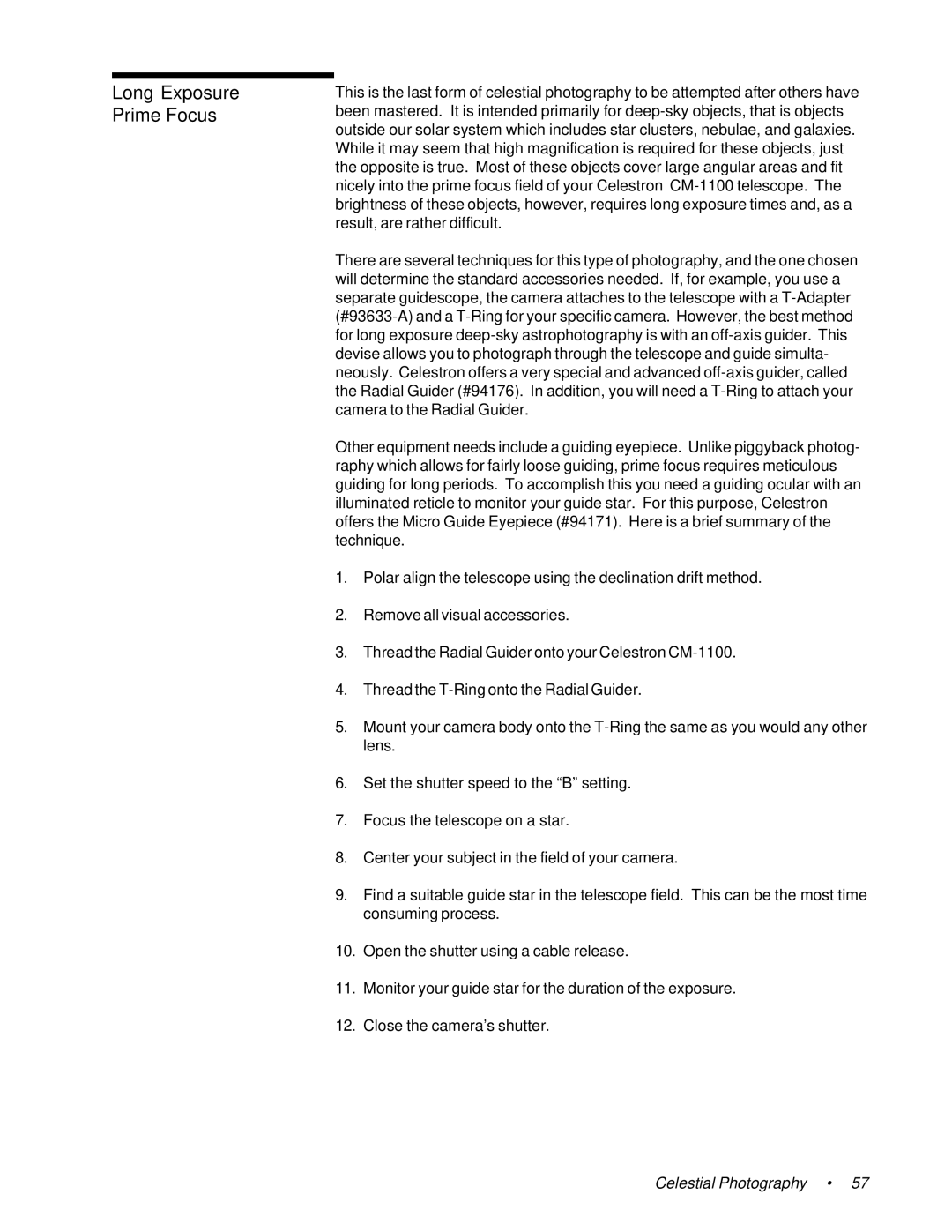Long Exposure Prime Focus
This is the last form of celestial photography to be attempted after others have been mastered. It is intended primarily for
There are several techniques for this type of photography, and the one chosen will determine the standard accessories needed. If, for example, you use a separate guidescope, the camera attaches to the telescope with a
Other equipment needs include a guiding eyepiece. Unlike piggyback photog- raphy which allows for fairly loose guiding, prime focus requires meticulous guiding for long periods. To accomplish this you need a guiding ocular with an illuminated reticle to monitor your guide star. For this purpose, Celestron offers the Micro Guide Eyepiece (#94171). Here is a brief summary of the technique.
1.Polar align the telescope using the declination drift method.
2.Remove all visual accessories.
3.Thread the Radial Guider onto your Celestron
4.Thread the
5.Mount your camera body onto the
6.Set the shutter speed to the “B” setting.
7.Focus the telescope on a star.
8.Center your subject in the field of your camera.
9.Find a suitable guide star in the telescope field. This can be the most time consuming process.
10.Open the shutter using a cable release.
11.Monitor your guide star for the duration of the exposure.
12.Close the camera’s shutter.
